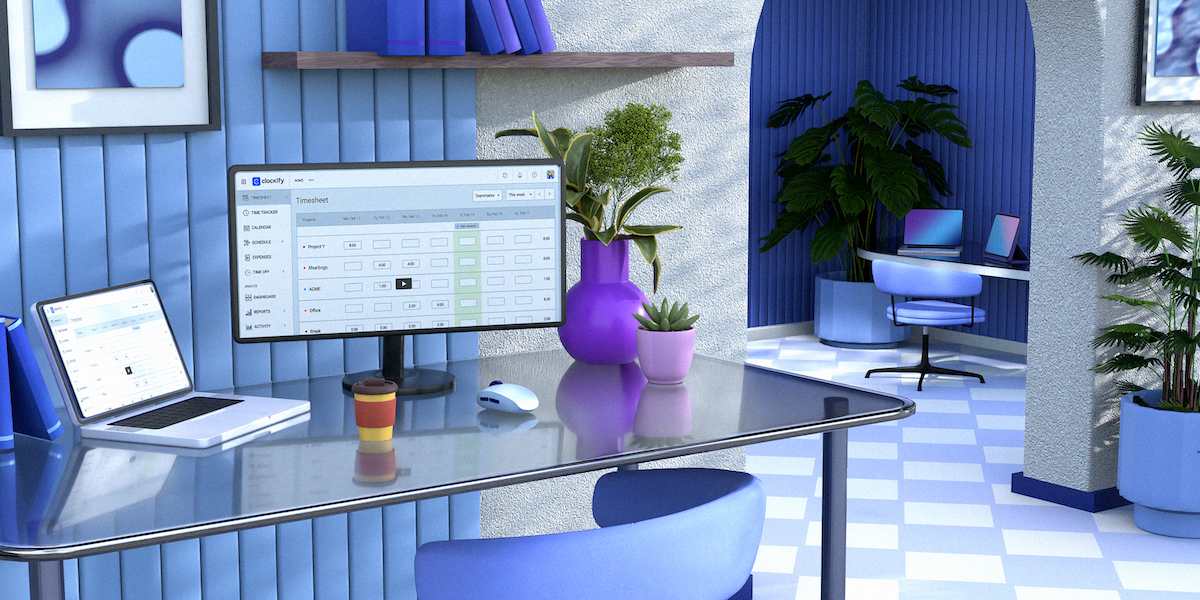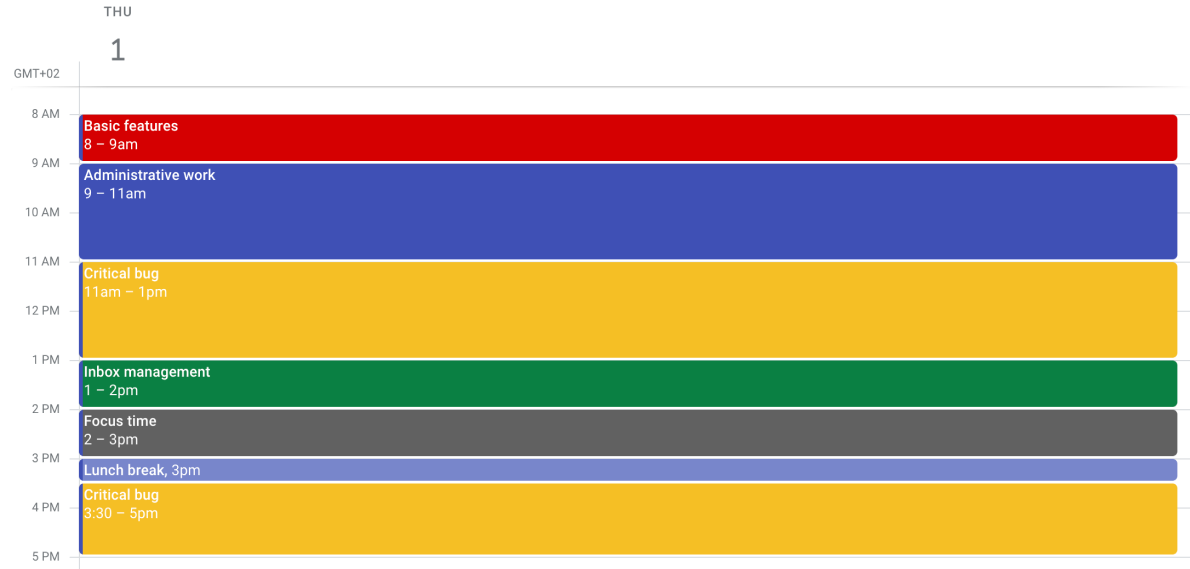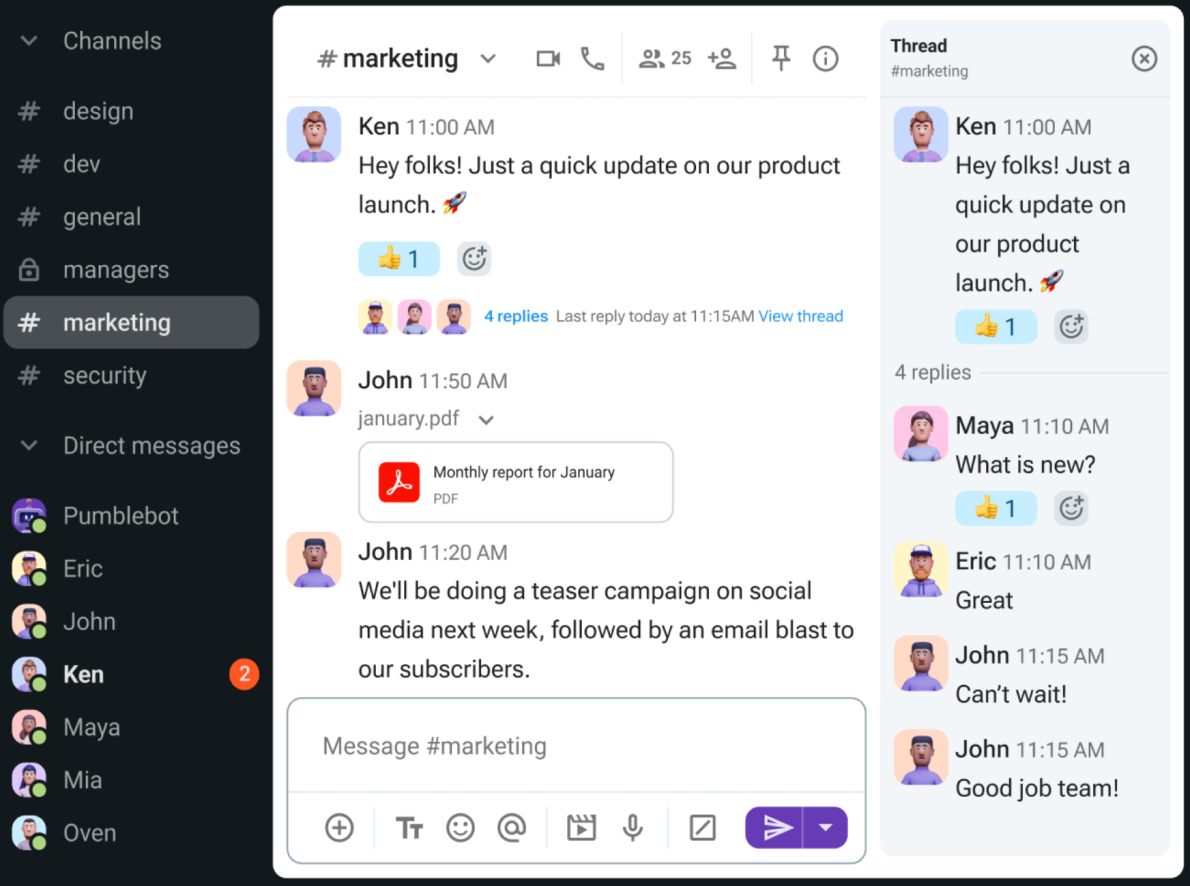Meetings are essential for teams — they help everyone make key decisions, improve team collaboration, and enhance employee creativity.
However, too many meetings drain employee energy and negatively affect their productivity.
Learn how to reduce meetings and help your team spend their time as productively as possible — with these 4 tips.

Tip #1: Allow employees to decline meetings with no clear agenda
LiveCareer’s statistics reveal that 69% of employees consider the lack of a clear meeting agenda as one of the main causes of frustration at meetings.
When a meeting doesn’t have a plan with topics, objectives, and action items, attendees are less engaged in the actual conversation. That’s because they don’t understand the point of the meeting.
As a result, this leads to unproductive meetings that leave everyone feeling as if they wasted valuable time.
So, if your team members notice that a meeting they’ve been invited to doesn’t have a clear agenda, allow them to decline the meeting invitation.
This way, they’ll have more time to spend on important tasks, which will make them happier and more motivated.
Tip #2: Track the time spent on meetings
To make informed decisions about which meetings to eliminate, it’s best to track the time spent on them.
Productivity coach Alexis Haselberger says that tracking meetings, both the time involved and the efficacy, helps you determine whether the meeting is worth the time:

“One of my favorite tricks is, for a few weeks, after you go to a meeting that doesn’t feel like a good use of your time, change the color on your calendar to something you don’t use (like gray). Then, after a few weeks, you can look back and see trends about which meetings are consistently a waste of your time.”
For this purpose, Clockify lets you track the time your team spends on tasks, and even see how much time they spend on different types of meetings.
To track meeting time in Clockify, your team members need to:
- Enter a task they’re working on (in this case, the task’s name is “Status update meeting”),
- Start the Timer the moment the meeting begins, and
- Turn the Timer off as soon as the meeting ends.

Once they stop the timer, a time entry for their meeting is automatically created and safely stored.
After Clockify gathers your team’s time tracking data, you can identify which meetings take up too much of your team’s time.
Then, you can decide whether it’s best to shorten or eliminate those meetings altogether.
This way, you’ll increase employee productivity and improve your meeting culture.
Tip #3: Encourage employees to block time on their calendars for important work
An employee may be working on an important task that requires undivided attention. However, staying focused can be challenging if their day is packed with meetings.
So, to help your team members engage in deep work, encourage them to block time for it on their calendars. In short, time blocking is a time management method where you divide your day into blocks of time dedicated to specific tasks and activities.

After they reserve the block of time for deep work, employees should make their calendars public so that everyone in the organization can see them.
This way, they prevent others from scheduling a meeting during their focus time.
Depending on the task employees want to focus on, the time block they create may be of different lengths — for example, it may be an hour or an hour and a half long.
To assess how long the time block for a certain task should be, employees can check their time tracking results in Clockify and see how much time they spent on similar tasks — thanks to the Google Calendar integration.

Start tracking time with Clockify
By blocking time in their calendar, employees can work without distractions, helping them perform better.
💡 CLOCKIFY PRO TIP
Need some more tips on how to stay focused while working? Here’s a useful resource for you:
Tip #4: Make use of asynchronous communication
Using forms of asynchronous communication, such as emails or direct messaging, helps teams stay connected even if they’re not online at the same time. This is especially important if your team works remotely or in different time zones.
Async communication also helps reduce unnecessary meetings, which is something Alexis Haselberger agrees with:

“Another good rule of thumb is that if the meeting is a status-update meeting or a one-way communication, it doesn’t need to be a meeting. This type of information can be shared asynchronously.”
Using emails or a team communication app for information-sharing purposes allows your team to make better use of their time.
For example, instead of adding another meeting to their already packed schedule, you can resolve certain matters or share updates with your team via direct messaging.

This way, your team can stay updated while having more time for their actual tasks.
So, if you’re not sure how to reduce meetings, replacing some of them with async communication is always a good solution. That way, you’ll prevent meeting overload and allow employees to work more efficiently wherever they’re working from.
Maximize your team’s productivity with Clockify
Apart from helping managers cut the number of meetings by tracking meeting time, Clockify offers a bunch of other functionalities to increase team productivity.
With the Clockify productivity tracker, your team can:
- Analyze their time spent on tasks to prioritize better, and
- Use a Pomodoro timer to stay focused.
They can also use Clockify’s Dashboard to see which activities they spend the most time on.

This way, they can check whether they spend too much time on trivial activities.
With Clockify’s numerous handy features, you can help your team work more efficiently and be successful.


